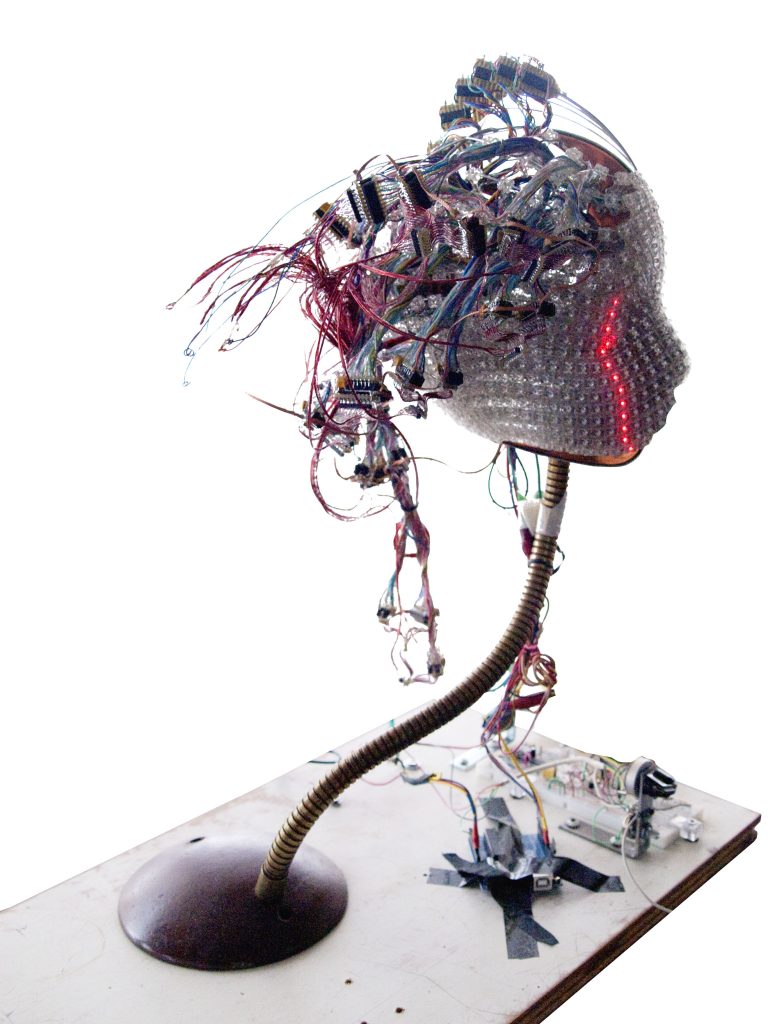One of us couldn’t make a life size dragon…
Back at SoOnCon (The short form the collective has taken on for their yearly gatherings) T. Shawn Johnson is leading the group through a workshop on free maker software. He displays little tikimen chess figures he created using Tinkercad, a free online modeling tool.
Johnson is a new member to the hacker world, having only joined Diyode in Guelph a few weeks before the conference. As an artist, he’s interested in turning fantasy into reality. He assists every year creating a huge maze — inspired in part by cult film Labyrinth — for the Guelph-based fantasy fair Enchanted Grounds. “My mandate as an artist is to expose people to fantasy in real life.”
Diyode was then a natural fit for the artist. “What excited me about [hacker spaces] is that we’ve got all these people and we can actually do this stuff,” he says. “One of us couldn’t make a life size dragon spewing fire but you get enough people excited about it you could actually make that happen.”
Educated in sculpture at OCAD in Toronto, Agnes Niewiadomski has been circling around Kwartzlab since its beginnings in 2009. The hack lab opened Niewiadomski’s eyes to new technologies that could complement her art practice. At Kwartzlab, she was able to learn how to use a laser cutter, a tool that allows precision design work. “Having the laser was an answer to a lot of the things I was doing.”
With Kwartzlab’s tools, she creates fabric plants that she sells at maker fairs — another gathering of creators where the public is invited to view and purchase their work. Working at Kwartzlab has also pushed her to think about what she does in new ways. “[When I made my projects] they were like what does it do? Does it have lights or motors in it?” She laughes. “But it got me thinking about how I can integrate some more technology in it.”
No one needs ask whether Bernie Rohde is integrating technology into his art. At SoOnCon the clockmaker and artist displays his pet project, a half bust constructed with LEDs and a mess of wires that give the sculpture a Medusa like appearance. She’s named Pixle, appropriately enough for this fusion of art and technology.
Computers haven’t reached their full potential yet, at least not for Rohde. “Computers have only built the left brain,” he says. “We’ve made a real good calculating machine and it can imitate intuitive functions but really its not working that way. Its just math inside.”
Rohde’s art practice is about working human intuition into technology. While some science fiction writers might worry about giving robots more intellectual ability, Rohde believes it’s the path to better art and computing ability. He’s following his intuition to. “I don’t plan every detail of the system. I let it show me.”
He echoes his artist compatriots when it comes to what hackerspaces give him. “[Kwartzlab] is going to be a creative environment, so you’ll have artists comfortable in that place,” he says. “Artists want to use technology in their art so they learn from engineers and the engineers want to do cool new stuff with the tech they know.”

